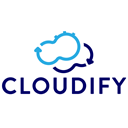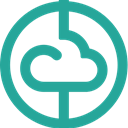Top Terraform Alternative Options for Infrastructure as Code
Terraform has become a cornerstone for infrastructure as code (IaC), allowing users to define and provision datacenter infrastructure using a declarative configuration language. It excels at managing low-level components like compute instances and storage, as well as high-level components such as DNS entries. However, as with any powerful tool, specific use cases, existing tech stacks, or personal preferences can lead users to seek a Terraform alternative. This article explores some of the best alternatives to Terraform, each offering unique strengths for managing your infrastructure.
Top Terraform Alternatives
Whether you're looking for different language support, specialized orchestration, or a simpler approach to IaC, these alternatives provide compelling options for managing your cloud and on-premise infrastructure.

Ansible
Ansible is a radically simple IT automation engine that stands out as a strong Terraform alternative for its focus on configuration management and application deployment. It's an open-source, Freemium tool available on Windows, Linux, BSD, and Python platforms. Its key features include powerful Configuration Management, a no-code approach, and leveraging SSH for communication, making it highly accessible and efficient for many automation tasks.

Pulumi
Pulumi offers a compelling Terraform alternative by allowing you to define infrastructure using familiar programming languages like JavaScript and Python, instead of DSLs or YAML. This open-source tool is free and supports Mac, Windows, and Linux. It excels in Multi-cloud management (AWS, Azure, GCP, Kubernetes), Serverless deployments, and Container orchestration, including support for Docker, making it ideal for developers who prefer a code-first approach to IaC.

Cloudify
Cloudify is an orchestration-first, model-driven cloud management platform that serves as an excellent open-source Terraform alternative, especially for Network Function Virtualization (NFV). It's free and compatible with Mac, Windows, Linux, and Web platforms. Features like Cloud-based operation, Cloud Monitoring, Continuous Deployment, and support for technologies like MongoDB, Nginx, Python, and Ruby make it a robust solution for complex orchestration needs, including multi-tenant environments.

Foreman
Foreman is an open-source project designed to help system administrators manage servers throughout their lifecycle, making it a valuable Terraform alternative for provisioning and configuration management. It's free and available on Linux, Web, and Self-Hosted platforms. Its core features include robust Configuration Management, Hardware Monitoring, and detailed System Info, providing a comprehensive solution for server lifecycle management.

Starsheep
Starsheep offers a unique open-source Terraform alternative as a YAML automation framework for creating decentralized applications with your favorite language. It's free and runs on Mac, Linux, and Raspberry Pi. Its primary feature is providing a fully scalable and fault-tolerant tool, based on cryptography, making it ideal for robust and resilient distributed systems.

Gyro Tool
Gyro Tool is a straightforward command-line tool for creating, updating, and maintaining cloud infrastructure, presenting itself as a lightweight Terraform alternative. This open-source tool is free and supported across Mac, Windows, and Linux. While no specific features are listed, its simplicity and focus on cloud infrastructure management make it a practical choice for users seeking a direct and efficient IaC solution.
Choosing the right Terraform alternative depends heavily on your specific needs, existing infrastructure, and team's skill set. Each of these tools offers distinct advantages, from programming language flexibility to specialized orchestration capabilities. We encourage you to explore these options further to find the best fit for your infrastructure as code journey.